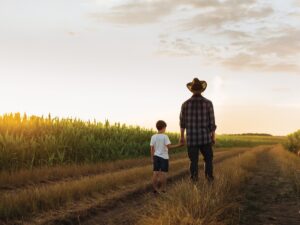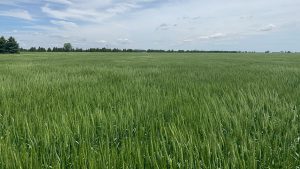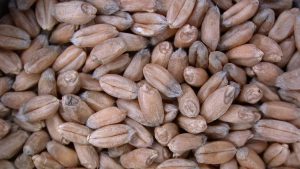Malting barley
A NEW CROP FOR THE NORTH?
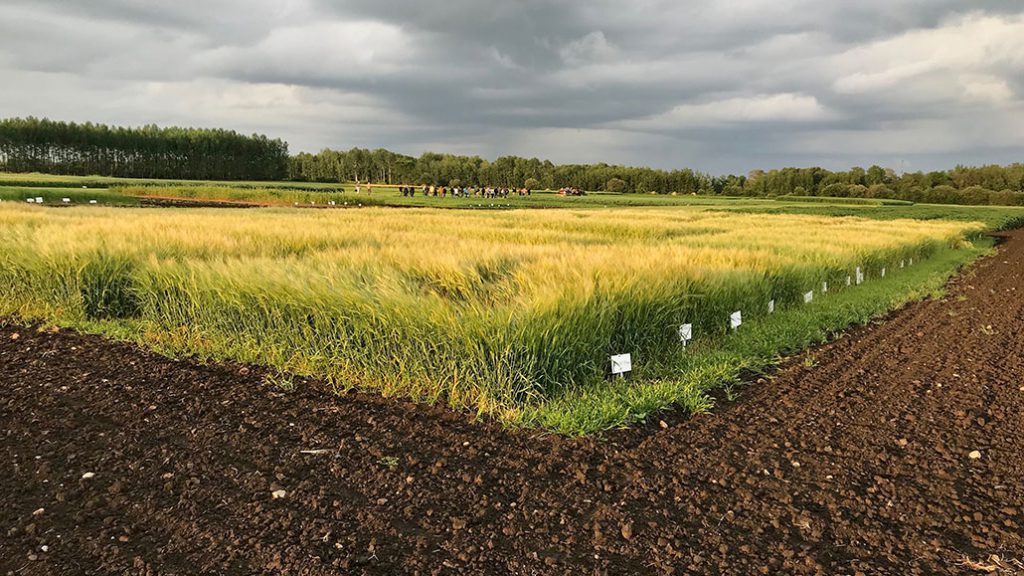
CROP DIVERSITY IS just one of the keys to on-farm success when it comes to farming in Northern Ontario. With an ever-growing agricultural industry in the north thanks to technological improvements, climate change, and the availability of land, farmers are looking for new opportunities to meet market demands in Ontario.
| WHAT YOU NEED TO KNOW • Brewers are interested in sourcing Ontario-grown malting barley. Currently the majority of malting barley is grown in Western Canada and imported to Ontario. • The Northern Ontario Farm Innovation Alliance (NOFIA) is currently in the third and final year of a study looking at potential malting barley varieties adapted to different regions across Northern Ontario and best management practices. • Hot, dry weather can lead to greater plant uptake of nitrogen from the soil, increasing the overall protein levels in the grain that may be too high for malting. • Ten different malting barley varieties are being tested. • Both nitrogen and sulphur are likely to increase crop yields, but may have adverse effects on the overall quality. |
One such demand is that of the craft brewery industry. The ever-growing beer economy contributes more than $13.68 billion to the Canadian GDP and provides more than 149,000 jobs. Particularly, the LCBO has seen an annual sales increase of 20 — 30 per cent of Ontario craft beer. It is predicted that over the next decade, the number of craft breweries in Ontario will grow from 200 to more than 500.
Opportunities for farmers lie in the growth of the craft brewery industry. Brewers are interested in sourcing Ontario-grown malting barley. Currently the majority of malting barley is grown in Western Canada and imported to Ontario. An increased demand for Ontario malt has led to a strong market for Ontario-grown malting barley. With the north having a somewhat similar climate to that of Western Canada, there is potential for malting barley to be a new crop that northern farmers could add to their rotations.
Growing malting barley is not without risk. There are many factors that can have an effect on whether the crop meets quality and is accepted for malting. Some of these factors are controllable, such as applying appropriate levels of fertilizer and harvesting at appropriate moisture levels. However, other factors, such as weather, are out of the farmer’s hands.
RESEARCH STUDY
The Northern Ontario Farm Innovation Alliance (NOFIA) is currently in the third and final year of a study looking at potential malting barley varieties adapted to different regions across Northern Ontario and best management practices. Funded in part by Grain Farmers of Ontario and the Canadian Agricultural Partnership, the goal of the project is to identify varieties and best management practices that yield well and meet malt quality.
The first two growing seasons of this trial (2018 and 2019), were a testament to the negative impact weather can have on malting barley crops. A very wet spring, followed by summers with drought-like conditions and then very wet harvest conditions provided not only growing challenges, but also had an affect on the malt quality.
Hot, dry weather can lead to greater plant uptake of nitrogen from the soil, increasing the overall protein levels in the grain that may be too high for malting.
A wet harvest season can lead to increased chitting (pre-harvest germination) and other issues. Despite these challenges, if a farmer is able to produce a crop that meets malt quality, they can expect up to a 20% revenue difference compared to feed-grade barley. This economic benefit just might make this crop worth the risk.
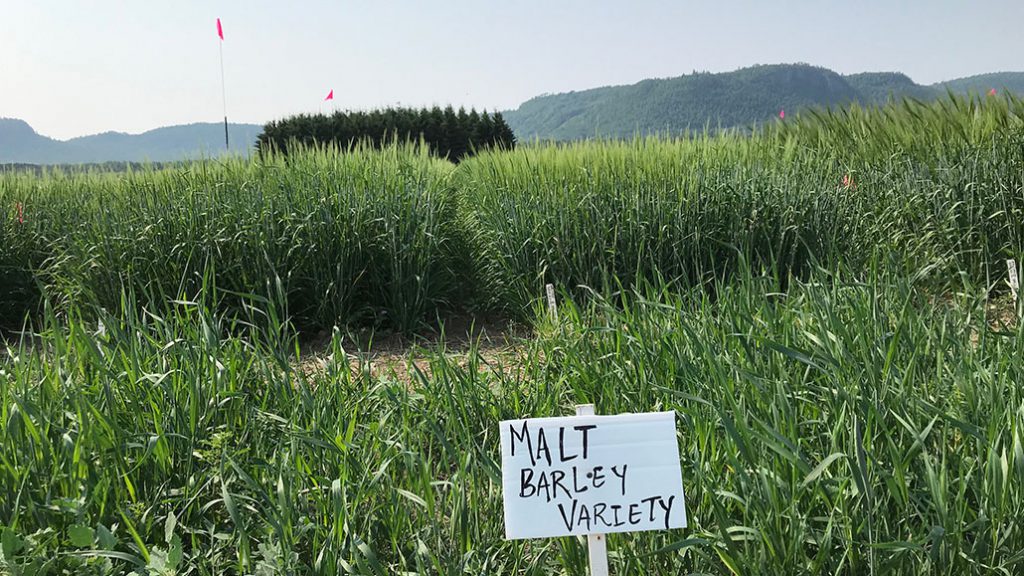
Test plots are located at the Emo Agricultural Research Station (EARS), Lakehead University Agricultural Research Station (LUARS) in Thunder Bay, and the New Liskeard Agricultural Research Station (NLARS). On-farm trials are also being coordinated by the Rural Agri-Innovation Network in the Algoma district to assess yields in the field. With the climates differing across the north, the hope is to be able to highlight high performing varieties and best management practices in each different region of the north.
Ten different malting barley varieties are being tested at the three research stations. These include: Bentley, AAC Synergy, CDC Bow, CDC Kindersley, CDC Fraser, AAC Connect, Lowe, Newdale, Copeland, and OAC 21. Different combinations of nitrogen and sulphur are also being tested in a separate trial to determine effects on yield and malt quality.
Tarlok Sahota, director for LUARS, sees “malting barley as a perfect fit for Northern Ontario growing conditions.” Certainly, the Thunder Bay-based station has seen tremendous success thus far in its trial in growing malting barley and meeting quality standards.
MANAGEMENT
Additionally, NOFIA is hoping to determine some best management practices for nitrogen and sulphur by studying different rates of application on the malting barley. Growing malting barley is very tricky, and good management is necessary for a farmer to meet malt quality. Both nitrogen and sulphur are likely to increase crop yields, but may have adverse effects on the overall quality. For example, high levels of applied nitrogen can lead to higher-than-ideal protein levels, causing the crop to be rejected for malting barley. For the trials, seven different rates of nitrogen using urea and Environmentally Smart Nitrogen (ESN) and three different rates of sulphur using gypsum are being tested on CDC Bow.
“In Rainy River we have had a really great spring and start of summer so far, though until now we have had little rain, but because of the extremely wet fall it wasn’t an issue for ground moisture. We have had lots of heat and the crops are growing nicely,” says Kim Jo Bliss, EARS station manager. “The malting barley trials look great! It is so interesting to see the differences in the fertility plots,” she adds, referring to the nitrogen and sulphur tests.
The remainder of the 2020 growing season is looking positive. The north was blessed with beautiful planting conditions, which is something the region has not seen in a few years. The rest of the season is looking as though the conditions may just be conducive to growing quality malting barley, so there is hope for positive results.
“Despite having a more challenging year by maintaining social distancing and taking necessary COVID-19 precautions, we were able to continue this trial at NLARS and we planted the variety trial on the 20th and the nitrogen and sulfur trial on the 22nd of May,” says Nathan Mountain, NLARS cropping systems research technician. “This spring definitely had more ideal conditions than what we have experienced in the last couple of years. Hopefully, this will continue to be a good growing season.”
Overall, there is keen interest to see more research in this area. NOFIA hopes to continue to test results at a field-scale level once the three years of this project are complete. The final report from this project will be made available next year on the NOFIA website, www.nofia-agri.com.
Emily Potter is the executive director of the Northern Ontario Farm Innovation Alliance (NOFIA), a non-profit organization which provides research and innovation infrastructure for agriculture in Northern Ontario by creating partnerships with various groups to research, innovate, and commercialize agricultural products and technologies for effective use in the region.
This project was funded in part by the Canadian Agriculture Partnership, a five-year federal-provincial-territorial initiative. •





